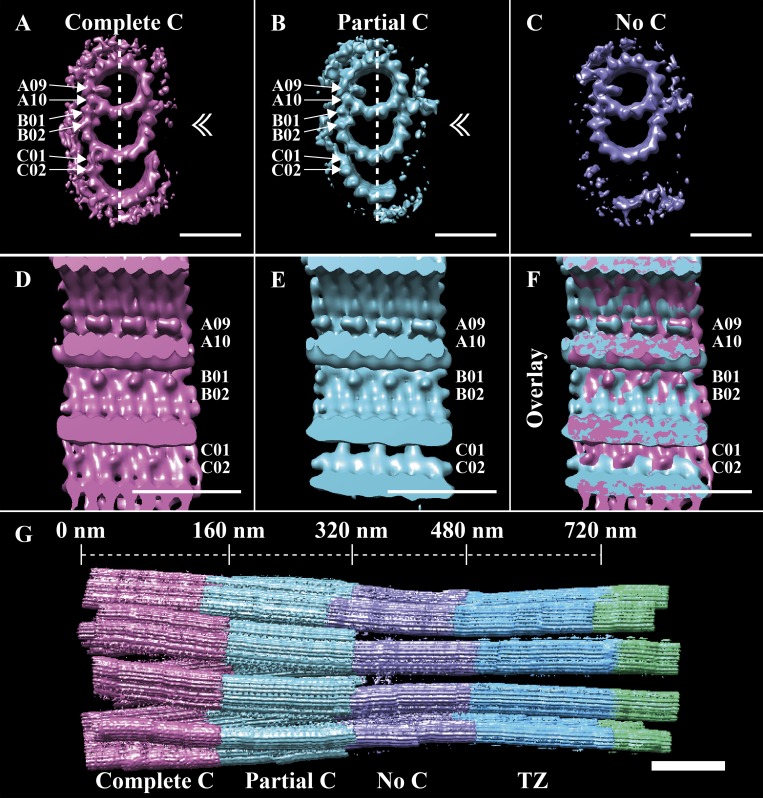Figure 5.
TMT-to-DMT conversion happens within the BB and correlates with changes to the outer BC junction. Subvolumes of the BB class were further classified based on their C-tubules, resulting in three major classes. (A) In one class (∼23%), the C-tubule was complete and had an MIP bound to protofilament C02. (B) A second class (∼24%) containing a partial C-tubule was also observed, but this class lacked the C02-bound MIP. (C) The final class (∼25%) contained no detectable C-tubule density. (D and E) When viewed from inside (plane of view defined by the dashed lines and double arrowheads in A and B), the C01 position was continuous in the TMT class (D) but periodic (8 nm) in the partial TMT class (E). (F) The differences at the outer BC junction, and the similarities in the A- and B-tubule MIPs, can be appreciated in the overlay. (G) A refit of the three BB classes back into the whole cilium shows the transition from TMTs to DMTs. Scale bars are 25 nm (A–F); 100 nm (G).

